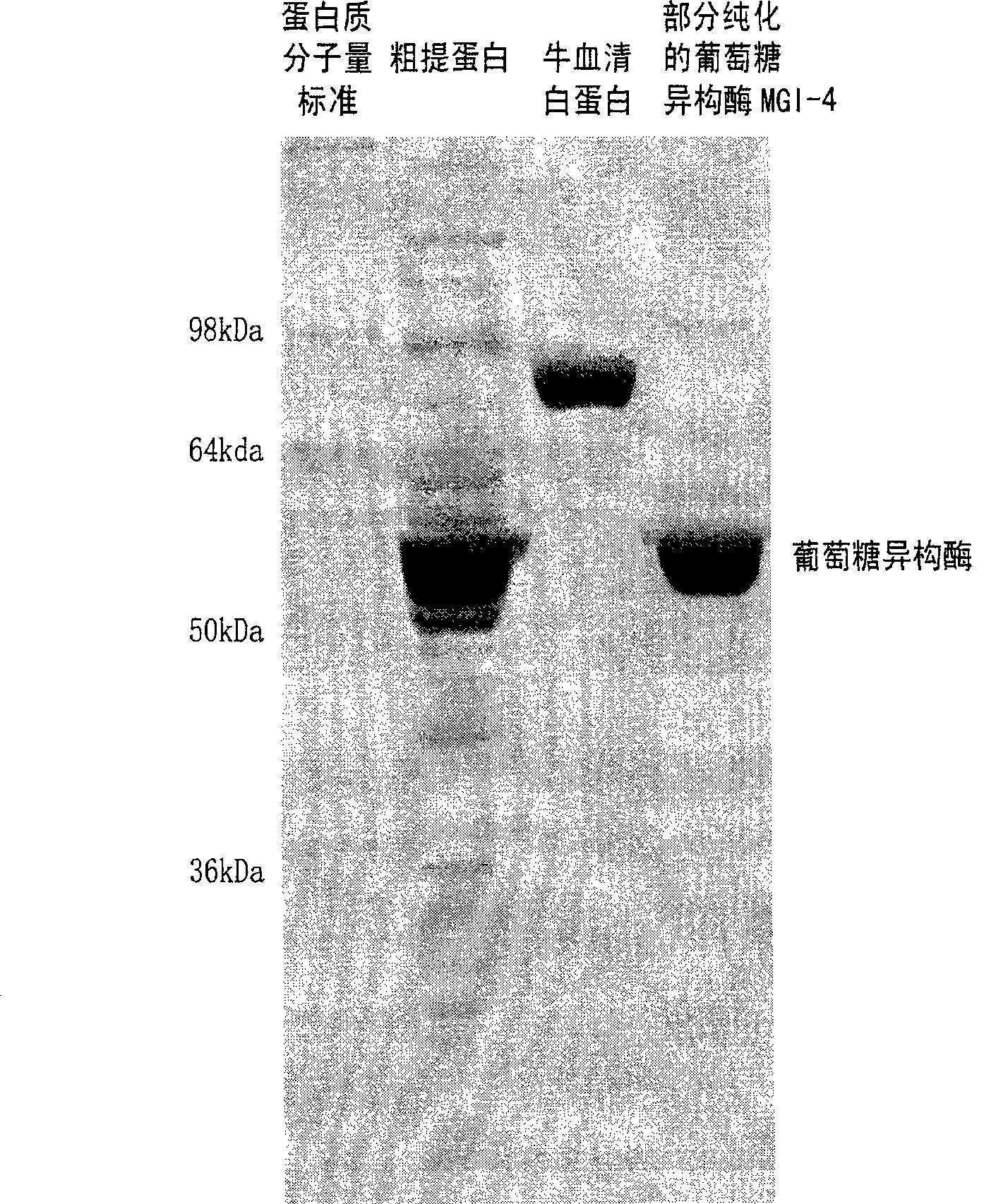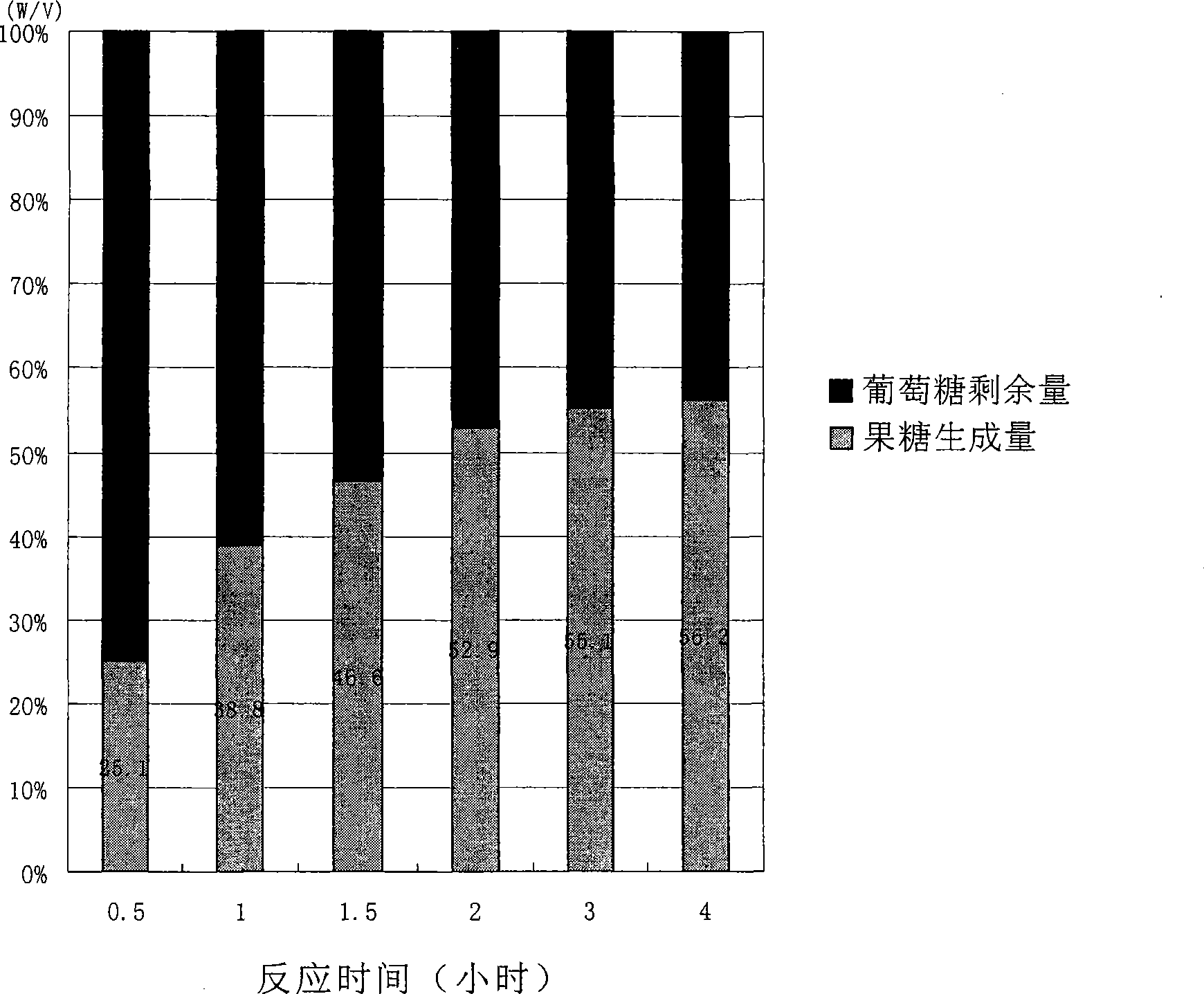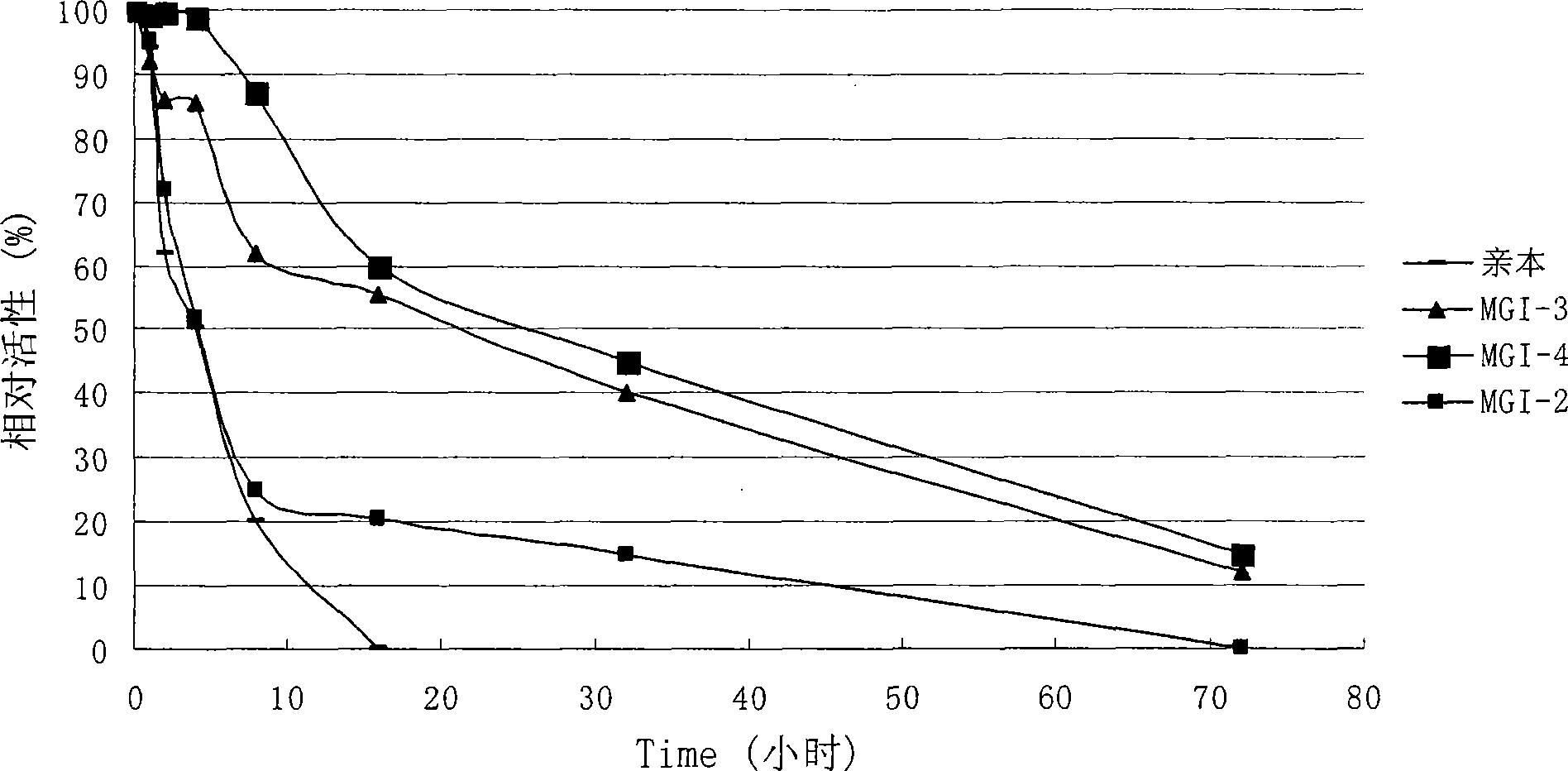Glucose isomerase mutant
A glucose isomerase and mutant technology, applied in the field of glucose isomerase mutants, can solve the problems of low activity, unused industrial production, and unsatisfactory heat resistance of high-temperature resistant glucose isomerase, and achieve high catalytic performance active effect
- Summary
- Abstract
- Description
- Claims
- Application Information
AI Technical Summary
Problems solved by technology
Method used
Image
Examples
Embodiment 1
[0027] Example 1: Amplification of parental genes and construction of pGEMT-TS
[0028] Primers T1 and T2 were designed according to the gene sequence of the gene bank (GenBank L09699) (see Table 1). The glucose isomerase parent gene was amplified from T. saccharolyticum ATCC49915 (purchased from ATCC, USA) using primer pair T1 and T2.
[0029] Amplification conditions are: 20mM Tris-HCl (pH8.8), 10mM KCl, 10mM (NH 4 ) 2 SO 4 , 2mM MgSO 4 , 0.1% TritonX-100, 50 μM dATP, 50 μM dTTP, 50 μM dCTP, 50 μM dGTP, 400 nM primer T1, 400 nM primer T2, 1.5U Pfu DNA polymerase (Promega, USA), pick a little T. saccharolyticum thallus with an inoculation loop , and then adjust the reaction volume to 50 μl with sterile water.
[0030] The PCR amplification reaction program was: 95°C for 3 minutes, 40 cycles: 95°C for 50 seconds, 50°C for 30 seconds, 72°C for 1 minute, and finally 72°C for 10 minutes. The amplified product (about 1.5 kb in length) was connected to the vector pGEMT-Easy t...
Embodiment 2
[0031] Example 2: Site-directed mutation of glucose isomerase position 139
[0032] For the technique of site-directed mutagenesis, refer to the descriptions of Ho et al. (Gene 77:51-59, 1989 and White et al. (PCR Protocol: current methods and applications. Totowa, N.J.: Humana Press, 1993).
[0033] Using the plasmid pGEMT-TS (see Example 1) as a template, design the primer pair 139FF and 139FR (see Table 1), and mutate the Trp (W) at position 139 in the parental amino acid sequence to Phe (F) to obtain the mutant MGI-W139F. See Example 1 for primer pair T1 and T2.
[0034] The T1FR fragment was amplified by primer pair T1 and 139FR; the FFT2 fragment was amplified by primer pair 139FF and T2. The amplification reaction conditions are: 20mM Tris-HCl (pH8.8), 10mM KCl, 10mM (NH 4 ) 2 SO 4 , 2mM MgSO 4 , 0.1% Triton X-100, 50 μM dATP, 50 μM dTTP, 50 μM dCTP, 50 μM dGTP, 400 nM primer T1 and 400 nM primer 139FR or 400 nM primer 139FF and 400 nM primer T2, 1.5 U Pfu DNA pol...
Embodiment 3
[0036] Example 3: Site-directed mutation of glucose isomerase position 182
[0037] For the technique of site-directed mutagenesis, refer to the descriptions of Ho et al. (Gene 77:51-59, 1989) and White et al. (PCR Protocol: current methods and applications. Totowa, N.J.: Humana Press, 1993).
[0038] Using the plasmid pGEMT-TS (see Example 1) as a template, design the primer pair 182AF and 182AR (see Table 1), and mutate the Arg(R) at position 182 in the parental amino acid sequence to Ala(A) to obtain the mutant MGI-R182A. See Example 1 for primers T1 and T2.
[0039] Using the primer pair T1 and 182AR, amplify the T1AR fragment; using the primer pair 182AF and T2, amplify the AFT2 fragment. The amplification reaction conditions are: 20mM Tris-HCl (pH8.8), 10mM KCl, 10mM (NH 4 ) 2 SO 4 , 2mM MgSO 4 , 0.1% Triton X-100, 50μM dATP, 50μM dTTP, 50μM dCTP, 50μM dGTP, 400nM primer T1 and 400nM primer 182AR or 400nM primer 182AF and 400nM primer T2, 1.5U PfuDNA polymerase, 20...
PUM
 Login to View More
Login to View More Abstract
Description
Claims
Application Information
 Login to View More
Login to View More - R&D
- Intellectual Property
- Life Sciences
- Materials
- Tech Scout
- Unparalleled Data Quality
- Higher Quality Content
- 60% Fewer Hallucinations
Browse by: Latest US Patents, China's latest patents, Technical Efficacy Thesaurus, Application Domain, Technology Topic, Popular Technical Reports.
© 2025 PatSnap. All rights reserved.Legal|Privacy policy|Modern Slavery Act Transparency Statement|Sitemap|About US| Contact US: help@patsnap.com



